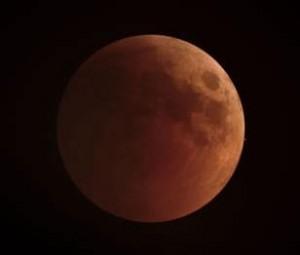Essential Information
| Location |
Royal Observatory
|
|---|---|
01 Sep 2015
This month’s main highlight is a lunar eclipse on 28 September, and there are also planets, meteors and an asteroid to look out for. Let's hope for some clear skies! (All times given are for London, BST, and may vary for other parts of the UK.)

1 Sept – try to find Uranus close to the waning gibbous Moon low in the Eastern sky after 22.00. Also try looking for the large asteroid Vesta to the lower right of the Moon. You’ll need to use a telescope to find both. If you need a stargazing telescope or decent binoculars, check our range of observing equipment recommended by Royal Observatory astronomers.
5 Sept – the Moon will be in its last quarter phase. Catch it rising in the east at about 23.10.
9 Sept – look out for shooting stars as the small annual Piscid meteor shower reaches its peak. You can expect up to 10 meteors per hour from a dark location.
10 Sept – Venus will be less than 3 degrees apart from the waning crescent Moon and the red planet Mars will be close by. They will be visible without binoculars a few hours before sunrise.
12 Sept – try finding Jupiter next to a very thin crescent Moon rising just before sunrise around 06.00 low in the east.
19 Sept – look for Saturn and the waxing crescent Moon low in the western sky until 20.30.
21 Sept – look for the first quarter Moon, rising just before 15.00 and visible until around 23.30.
23 Sept – the autumnal equinox occurs at 09.16 – this is when the Earth is neither tilted towards or away from the Sun and we receive equal amounts of daylight and night-time.
27-28 Sept – the full Moon will rise at 18.30 in the evening of 27 Sept and eventually setting at 07.00 the following morning. There will be a total lunar eclipse in the early hours of Monday 28 Sept - from 03.12 to 04.23, with partial eclipse between 02.08 and 05.27. The Moon will appear to turn a coppery red as it enters the Earth’s shadow. The Moon is also at ‘perigee’ (closest to Earth) around this time, meaning it appears larger than usual.
Don’t forget to share your pictures of the night sky and space with us on Twitter @ROGAstronomers or via Facebook.
Space and observation events at the Royal Observatory
The Sky Tonight live planetarium show – come on a fantastic tour of what you can see for yourself in the night sky, presented by one of our astronomers. Shows daily. Other upcoming events at the Observatory include: Silver Screen Science-Fiction: Westworld (1973) (10 September, 19.00) A robot malfunction creates havoc and terror for unsuspecting vacationers at a futuristic, adult-themed amusement park. Open House London: The Altazimuth Pavilion (19-20 September) Normally partially closed to the public, this charming 19th-century domed building houses historic telescopes used by the Solar Department at the Royal Observatory until 1949. Solar Secrets: Understanding Our Star, the Sun (Thursday 24 September, 19.00) A visual voyage of discovery with Royal Observatory astronomer Brendan Owens, as he demonstrates how far we have come in our understanding of the Sun and its effect on us and Earth; and how we can better forecast ‘Space Weather’. Part of a season of talks celebrating the International Year of Light and the centenary of Albert Einstein’s General Theory of Relativity.